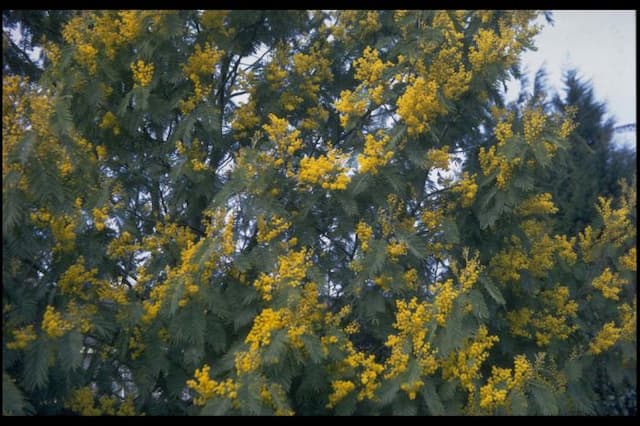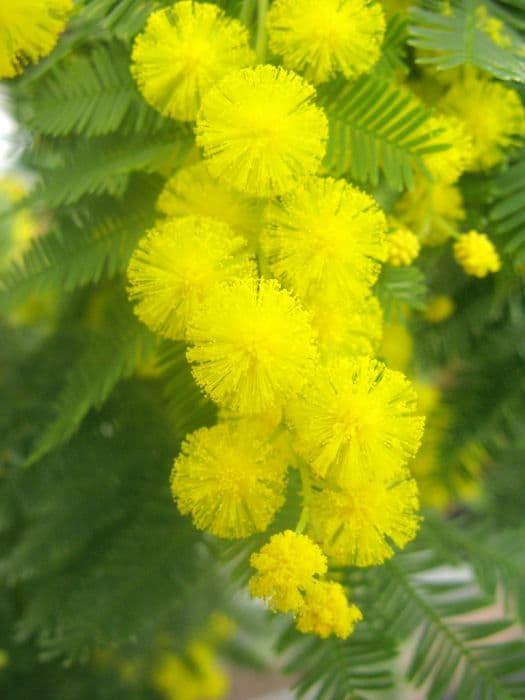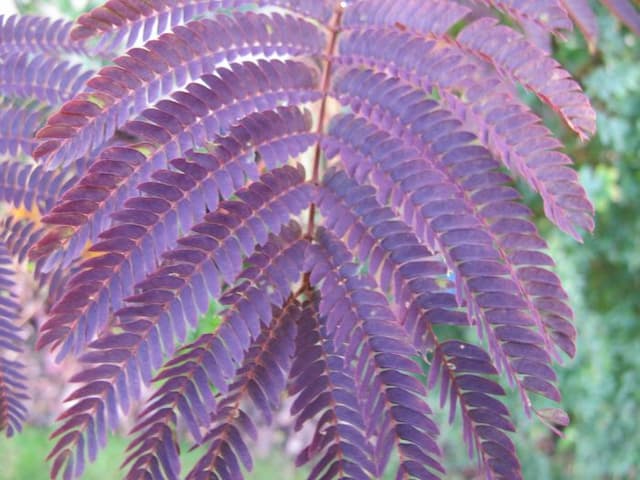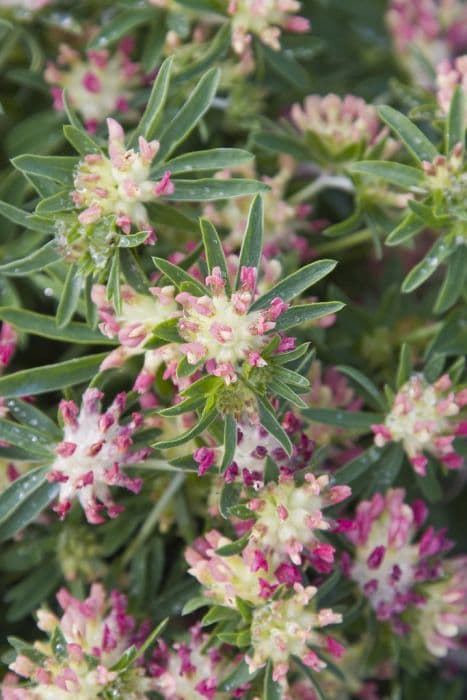Persian Everlasting Pea Lathyrus rotundifolius

ABOUT
Lathyrus rotundifolius, commonly known as Persian everlasting pea, is a perennial plant with a vigorous growth habit. It displays tendrils that it uses to climb and support itself on nearby structures. The foliage consists of pinnate leaves which are composed of a number of oval-shaped leaflets that are rounded at the tips, giving it a lush green appearance. The most striking feature of the Persian everlasting pea is its flowers, which are typically borne in clusters. Each individual bloom is carried on a short stem and possesses a standard petal structure that is prominent within pea family plants. The flowers have an attractive color, often showcasing warm shades such as pink, coral, or rich plum, and are admired for their ornamental beauty. The plant possesses a rugged stem that can support its climbing nature, with the leaves and flowers arranged alternately along it. After flowering, the Persian everlasting pea produces pods that encase the seeds, typical of legumes, although in a domestic garden setting these are often removed to encourage further blooming. The overall appearance of the Persian everlasting pea with its attractive foliage and charming flowers creates a delightful presence in the garden, especially when allowed to meander over trellises, fences, or through shrubbery, offering a romantic and cottage-like appeal.
About this plant
 Names
NamesFamily
Fabaceae
Synonyms
Persian Everlasting Pea, Round-Leaved Pea
Common names
Lathyrus rotundifolius.
 Toxicity
ToxicityTo humans
Persian everlasting pea, the common name for Lathyrus rotundifolius, is not commonly considered toxic to humans. However, some species within the Lathyrus genus contain a compound known as ODAP (beta-N-oxalyl-L-alpha,beta-diaminopropionic acid), which can cause a condition called lathyrism if consumed in large amounts over a period of time. Lathyrism can lead to paralysis and muscle wasting, although these effects are mostly associated with the consumption of Lathyrus sativus (grass pea), not Lathyrus rotundifolius specifically. It is advised to be cautious with consuming any parts of plants from the Lathyrus genus, especially in large quantities or over an extended period, due to these potential toxicity concerns.
To pets
Persian everlasting pea is generally not well-documented for its toxicity to pets, but members of the genus Lathyrus can be potentially harmful if ingested. Some Lathyrus species contain amino acid-like compounds that can cause lathyrism in animals, which is characterized by neurotoxicity and may lead to symptoms such as weakness, lethargy, and seizures. As with toxicity to humans, these effects are primarily associated with other species like Lathyrus sativus rather than Lathyrus rotundifolius. Nevertheless, it is often recommended to prevent pets from ingesting parts of plants in the Lathyrus genus to avoid any possible adverse effects.
 Characteristics
CharacteristicsLife cycle
Perennials
Foliage type
Deciduous
Color of leaves
Green
Flower color
Pink
Height
2 feet (0.61 meters)
Spread
1 foot (0.30 meters)
Plant type
Climber
Hardiness zones
7
Native area
Middle East
Benefits
 General Benefits
General Benefits- Aesthetic Appeal: Lathyrus rotundifolius, commonly known as Persian Everlasting Pea, features charming pink or wine-colored flowers that can enhance the visual appeal of gardens and landscapes.
- Attracts Pollinators: Its blooms attract bees and butterflies, which are crucial for pollination and maintaining a healthy ecosystem.
- Drought Tolerance: Once established, the Persian Everlasting Pea exhibits some level of drought tolerance, making it suitable for gardens in drier climates or water-wise landscaping.
- Low Maintenance: It generally requires minimal upkeep beyond basic watering and occasional feeding, making it ideal for gardeners seeking low-maintenance plants.
- Versatility in Landscaping: This plant can be used in a variety of landscaping designs, serving as groundcover, or grown in trellises and arbors due to its climbing nature.
- Soil Improvement: As a member of the legume family, it can help improve soil health through nitrogen fixation—this is beneficial for subsequent plantings that might require nutrient-rich soil.
- Edible Parts: Though not its primary use, some parts of the plant, if properly identified and prepared, may be consumed, thus contributing to its versatility.
 Medical Properties
Medical PropertiesThis plant is not used for medical purposes.
 Air-purifying Qualities
Air-purifying QualitiesThis plant is not specifically known for air purifying qualities.
 Other Uses
Other Uses- Lathyrus rotundifolius, commonly known as Persian Silk plant, can be used in cut flower arrangements due to its vibrant and attractive flowers, adding a splash of color to bouquets and floral decorations.
- The climbing nature of the Persian Silk plant makes it suitable for decorative purposes in gardening, such as growing along trellises and fences to create natural green screens for privacy.
- Its twining stems and foliage may be used in artistic installations and set designing for creating a natural and rustic aesthetic in theatrical productions and photo shoots.
- Persian Silk plant's seed pods, once dried, can be utilized in craft projects, such as in the creation of unique jewelry pieces or as part of dried flower compositions.
- The dried stems of the Persian Silk plant offer an ideal material for weaving small baskets or creating sustainable garden ties and support structures for other plants.
- Enthusiasts of natural dyeing techniques can experiment with the flowers and leaves to derive subtle green and yellowish dyes for fabrics and yarns.
- The plant's rapid growth can be harnessed to cover unsightly garden features or rejuvenate patches of land by creating a quick green cover.
- In regions where it is native, Persian Silk can be planted for erosion control, stabilizing soil on slopes and banks with its root system.
- As a companion plant in gardens, Persian Silk can be beneficial by attracting beneficial insects, thanks to its vibrant flowers.
Interesting Facts
 Feng Shui
Feng ShuiThe Persian everlasting pea is not used in Feng Shui practice.
 Zodiac Sign Compitability
Zodiac Sign CompitabilityThe Persian everlasting pea is not used in astrology practice.
 Plant Symbolism
Plant Symbolism- Perseverance: Lathyrus rotundifolius, commonly known as Persian Everlasting Pea, tends to climb and persist in tough conditions, symbolizing the ability to endure and overcome difficulties.
- Lasting Bonds: As a perennial plant, the Persian Everlasting Pea represents long-lasting relationships and enduring affection.
- Blissful Pleasure: Known for its colorful and fragrant flowers, this plant is often associated with the joy and pleasure found in the small wonders of life.
- Safe Haven: With its tendency to create dense foliage, the Persian Everlasting Pea can be a symbol of a protective environment or a safe retreat.
- Cherished Memories: Because it returns each year, the plant can represent cherished memories that are revisited time and time again.
 Water
WaterPersian Silk Flower, scientifically known as Lathyrus rotundifolius, prefers to be watered when the top inch of soil feels dry to the touch. Typically, this could mean watering once a week, but this can vary depending on the environmental conditions such as temperature and humidity. When watering, it is essential to water the plant thoroughly, allowing water to run through the drainage holes of the pot. This might mean using approximately half a gallon for a medium-sized pot, ensuring the soil is moist without being waterlogged. During the winter months, reduce the frequency of watering as the plant's growth slows down.
 Light
LightPersian Silk Flower thrives best in full sun to partial shade conditions. This plant will benefit from being placed in a spot where it can receive at least six hours of sunlight every day. A south or west-facing window would be ideal for indoor plants, while ensuring some shade during the hottest part of the day to prevent scorching the leaves. However, too little light can lead to poor flowering, so monitoring the light levels is crucial for the health of the Lathyrus rotundifolius.
 Temperature
TemperaturePersian Silk Flower grows best in temperate climates with temperatures ranging between 60 and 75 degrees Fahrenheit. It can survive minimum temperatures of around 50 degrees Fahrenheit, but frost can be detrimental to the plant. Avoid placing the plant in areas where temperatures can drop significantly at night or where cold drafts may occur. Ideally, maintain a consistent temperature to promote healthy growth and flowering.
 Pruning
PruningPruning Persian Silk Flower is essential to maintain its shape and to encourage bushier growth as well as more abundant flowering. Lightly prune the plant after flowering to remove spent blooms and any unhealthy foliage, which will stimulate new growth. The best time to prune is late winter or early spring, before the new growth starts. Prune every year to keep the plant healthy and well-shaped.
 Cleaning
CleaningAs needed
 Soil
SoilPersian Silk Vine prefers well-draining soil with organic matter and a pH between 6.0-7.5. A mix of loam, peat, and sand in equal parts works well for this plant.
 Repotting
RepottingPersian Silk Vine should be repotted every 1-2 years or when it outgrows its current pot, usually in spring before new growth begins.
 Humidity & Misting
Humidity & MistingPersian Silk Vine thrives best at average room humidity levels, around 40-50%. It doesn't require high humidity environments.
 Suitable locations
Suitable locationsIndoor
Place Persian Silk Vine in bright, indirect light indoors and ensure good air circulation.
Outdoor
Ensure Persian Silk Vine has partial shade and shelter from strong winds when grown outdoors.
Hardiness zone
4-8 USDA
 Life cycle
Life cycleLathyrus rotundifolius, commonly known as the Persian everlasting pea, begins its life cycle as a seed which germinates in spring when the soil warms up. The seed develops into a seedling, with two initial leaves (cotyledons) that push through the soil surface. As it matures, true leaves form and the plant establishes a root system to absorb water and nutrients. The plant grows vegetatively, producing a climbing or trailing vine with rounded leaves and a strong stem. It flowers in summer, producing sweetly scented blossoms, generally in shades of pink and purple, which then give way to pod-like fruits containing seeds. These seeds eventually fall to the ground or are dispersed, remaining dormant until conditions are favorable for the next generation to germinate.
 Propogation
PropogationPropogation time
Spring
The Persian everlasting pea, Lathyrus rotundifolius, can be propagated in various ways, but the most popular method is by seeding. The best time to sow seeds is in early spring, right after the danger of frost has passed. To propagate this way, soak the seeds in water for 24 hours to soften the hard outer shell; this promotes better germination. Then, plant the seeds at a depth of approximately 1 inch (2.54 cm) in a well-draining soil mix. Ensure they are spaced about 2 to 3 inches (5 to 7.6 cm) apart. The seeds usually germinate within 2 to 3 weeks, and once seedlings are established and the risk of frost is entirely gone, they can be transplanted outdoors to their final position where they can climb freely. It's important to ensure full sun exposure and provide a support structure for the plant tendrils to cling to as they grow.









